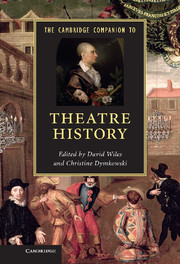13 - Music theatre and musical theatre
from Part IV - What?
Published online by Cambridge University Press: 05 February 2013
Summary
Music theatre is a complex subject. We often find ourselves adrift in trying to conceptualise two interlocking art forms, our task complicated by the need to order and investigate music theatre’s rudimentary elements such as song, dance and dramatic text. These simple terms carry unfixed meanings because, throughout history, different traditions and practices have conceived them in various ways. The concept of music theatre covers not only twentieth-century avant-garde theatre, examples being Stravinsky’s The Soldier’s Tale, Philip Glass’s minimalist opera Einstein on the Beach, and a Meredith Monk piece of movement/vocal theatre, but also a spectrum of commercial work popularly known as ‘musical theatre’, such as West End and Broadway productions of Legally Blonde or Chicago. The blurry meaning of music theatre is further complicated by recent scholarly work in nineteenth-century popular theatre, which illustrates the difficulty of distinguishing theatre with musical elements from entertainments labelled as music hall. The figure of the actor–musician has always occupied the space between music-making and theatre-making. Such an apparently hybrid performer trained and worked in fifth-century BCE Greek tragedy, in Zeami’s fifteenth-century Noh theatre, in Sanskrit and Jingxi theatre, and in a John Doyle staging of a Stephen Sondheim musical.
To write music theatre history is to make sense of its complexity, establishing webs of transmissions and shared genealogies that join the worlds of music and of theatre together. To this end we have to accept the history of music theatre as more than the sum of its musical and theatrical parts; in other words, this history is inherently interdisciplinary. With this is mind, I will identify and describe key historical landmarks and developments in music theatre under the categories of ‘hybrid’, ‘collaborative’, and ‘totalising’. These three descriptors equate with the three notions of convergence, permeability and integration and offer a means of conceptualising the ways in which disciplines engage. They elucidate processes in music theatre that explode or reformulate boundaries in the arts. To some extent, most if not all works of music theatre possess all three attributes: that is, they are overtly cross-bred with past and contemporaneous styles, idioms and practices (hybrid); they combine music and theatre practices to produce innovations in form and content (collaborative); and they fuse both art forms so that our ways of hearing and seeing are redefined (totalising).
- Type
- Chapter
- Information
- The Cambridge Companion to Theatre History , pp. 197 - 209Publisher: Cambridge University PressPrint publication year: 2012
References
- 1
- Cited by

